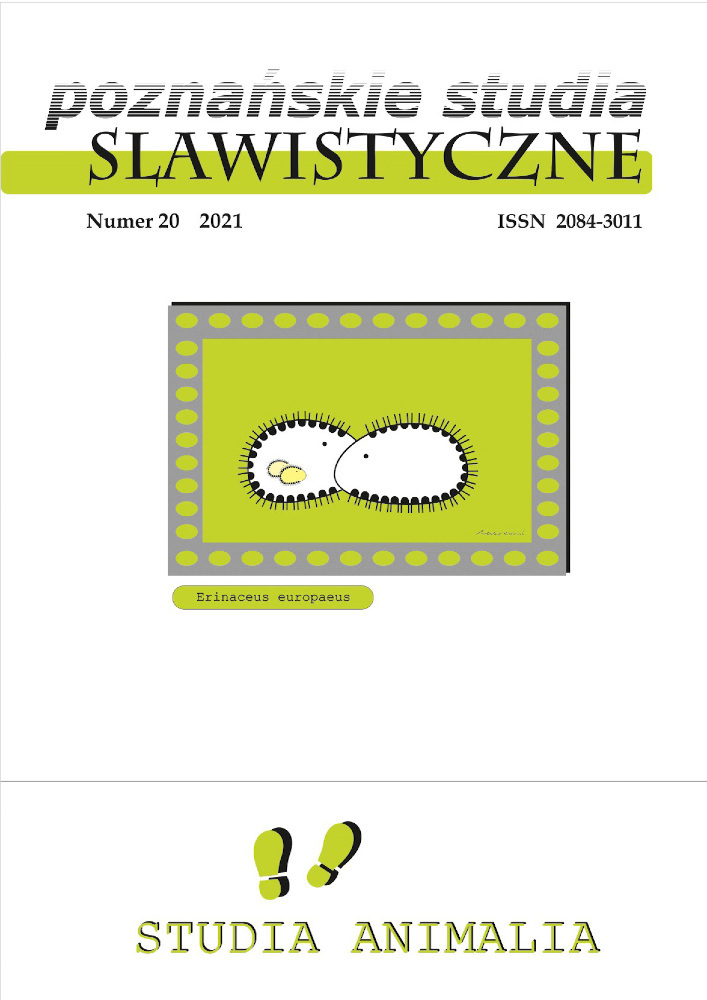Abstract
The first segment of the zooethical article about cockroaches, insects of the order Blattodea, who have lived on Earth for more than 300 million years (cf. Grush, 2016) and will survive the apocalypse of climate change, is based on research by Russian folklorist Aleksandr V. Gura (Гура, 2005), who gives examples of beliefs about cockroaches from the Russian ethnotradition, which I then compare with examples from the Croatian ethnotradition.In the second part of the article, I problematize the contemporary attitude towards cockroaches, starting from the literary reality of the novel Kiklop (Cyclops, 1965) by Ranko Marinković – from “Maar-commercial” (“Maar-tonfilmska reklama”), Melkior’s critique of the ad-centric worldview that begins with his exit from the public toilet in the central town square. The ways in which insecticides are used against cockroaches (and other insects considered by modern civilization as pests) demonstrates that in the past at least some cultures – as Russian ethnotradition demonstrates – were far more considerate of cockroaches, as we suggested in the first part of this dichotomously structured article.
Funding
Tekst je sufinancirala Hrvatska zaklada za znanost (projekt IP-2019-04-5621 „Kulturna animalistika: interdisciplinarna polazišta i tradicijske prakse – ANIMAL”).
References
Benić, K. (2010). Radion pere sam. https://www.tportal.hr/vijesti/clanak/radion-pere- -sam-20100715. 1.10.2020.
Blatta orientalis – crni žohar. http://www.adlibitum.hr/blatta-orientalis-crni-zohar/. 24.08.2018. Boxer, S. (2003).
Cockroaches as Shadow and Metaphor; An Artist Began Chilling and Decorating Bugs, But Moved On to Depicting Their Executions. „The New York Times”. https://www.nytimes.com/2003/05/08/arts/cockroaches-shadowmetaphor-artist-began-chilling-decorating-bugs-but-moved.html. 24.08.2018.
Copeland, M. (2003). Cocroach. London: Reaktion Books. Crni žohar. http://www.id90.hr/kukci/zohari/crni-zohar. 4.03.2019.
Day Biehler, D., Cronon, W. (2013). Pests in the City: Flies, Bedbugs, Cockroaches, and Rats. Washington: University of Washington Press.
Douglas, M. (2004). Čisto i opasno: antropološka analiza pojmova nečistoće i tabua. Zagreb: Algoritam.
Grush, L. (2016). The Verge Review of Animals: The Cockroach, The Perfect Organism. https://www.theverge.com/2016/1/17/10777040/cockroach-animal-review. 24.08.2018.
Gura, A. V. (2007). Simbolika životinja u slavenskoj narodnoj tradiciji: domaći kukci – nametnici (buha, uš, stjenica, žohar). U: Kulturni bestijarij. Ur. S. Marjanić, A. Zaradija-Kiš. Zagreb: Institut za etnologiju i folkloristiku–Hrvatska sveučilišna naklada, str. 99–124.
Hansen-Kokoruš, R. (2004). Avangardni preteksti u Marinkovićevu djelu. U: Komparativna povijest hrvatske književnosti. Europski obzori Marinkovićeva opusa. Zbornik radova VI. sa znanstvenog skupa održanog 29. i 30. rujna 2003. godine u Splitu. Ur. M. Tomasović et al. Split: Književni krug, str. 77–87.
Kišpatić, M. (1887). Kukci. Prirodopisne crtice. Knjiga II. Zagreb: Matica hrvatska– Tisak Dioničke tiskare.
Lang, M. (1992). Samobor. Narodni život i običaji. Reprint. Samobor: „Zagreb”, Poduzeće za grafičku djelatnost.
Lipovetsky, G. (2008). Paradoksalna sreća. Ogledi o hiperpotrošačkom društvu. Zagreb: Antibarbarus.
Marinković, R. (1981). Izabrana djela II. Kiklop. Pet stoljeća hrvatske književnosti, knj. 137. Zagreb: Nakladni zavod Matice hrvatske.
Marjanić, S. (2017). The Anthropology of Animals – Paradox and/or Necessity. U: What to Do with Folklore? New Perspectives on Folklore Research. Ur. M. Golež Kaučič. BASIS, knj. 9. Trier: Wissenschaftlicher Verlag Trier, str. 123–139.
Mikić, R. (1988). Postupak karnevalizacije: Uvod u poetiku Ranka Marinkovića. Beograd: Filip Višnjić.
Sax, B. (1990). The Frog King. On Legends, Fables, Fairy Tales and Anecdotes of Animals. New York: Pace University Press.
Schweid, R. (1999). The Cockroach Papers: A Compendium of History and Lore. New York: Four Walls Eight Windows.
Sladetić, A. (2016). Vizualni ogledi o čistoći: zid kao mjesto, prostor i sjećanje. [Neobjavljena doktorska disertacija]. Zagreb: Akademija likovnih umjetnosti.
Vičar, B. (2018). Diskurzivna konstrukcija kukaca u televizijskim oglasima: multimodalna analiza. [Neobjavljen rad, u tisku].U: Bestijarij hrvatske etnokulture: leksikon [radni naslov leksikona projekta IP-2019-04-5621 „Kulturna animalistika: interdisciplinarna polazišta i tradicijske prakse – ANIMAL”, Hrvatska zaklada za znanost].
Visković, N. (1996). Životinja i čovjek. Prilog kulturnoj zoologiji. Split: Književni krug. Žohari – svijet koji ostaje. Autorica i koncept izložbe: I. Mihoci. Autori izložbe i kataloga: I. Mihoci, P. Crnčan, V. Mičetić Stanković i M. Jagić. Zagreb: Hrvatski prirodoslovni muzej, 2018.
Winston, M. L. (1997). Nature Wars. People vs. Pests. Cambridge, Massachusetts– London: Harvard University Press.
Гура, А. (2005). Симболика животиња у словенској народној традицији. Београд: Бримо–Логос–Александрија. Ђорђевић, Т. Р. (1958). Природа у веровању и предању нашега народа, II књига. „Српски етнографски зборник” књ. LXXII.
[Gura, A. (2005). Simbolika životinja u slovenskoj narodnoj tradiciji. Beograd: Brimo– Logos–Aleksandrija.
Đorđević, T. R. (1958). Priroda u verovanju i predanju našega naroda, II knjiga. „Srpski etnografski zbornik” knj. LXXII].
License

This work is licensed under a Creative Commons Attribution 4.0 International License.

